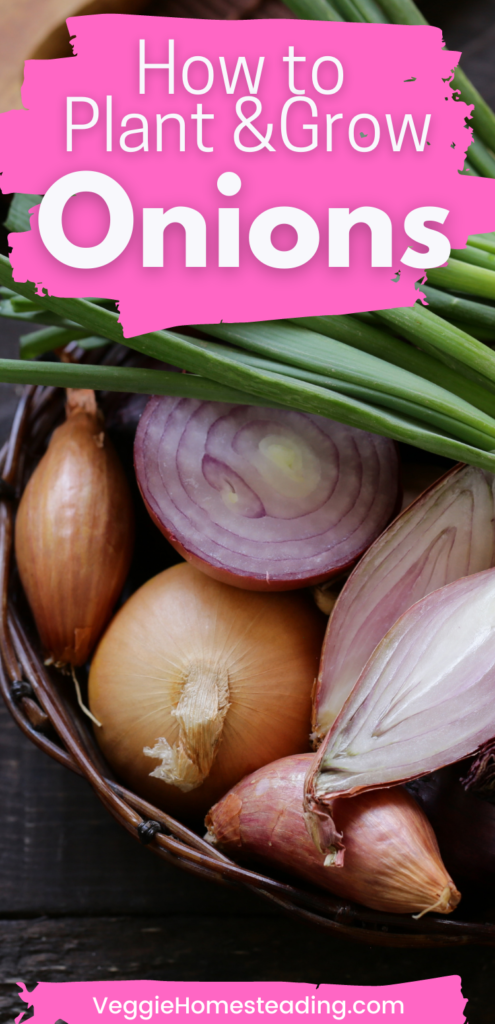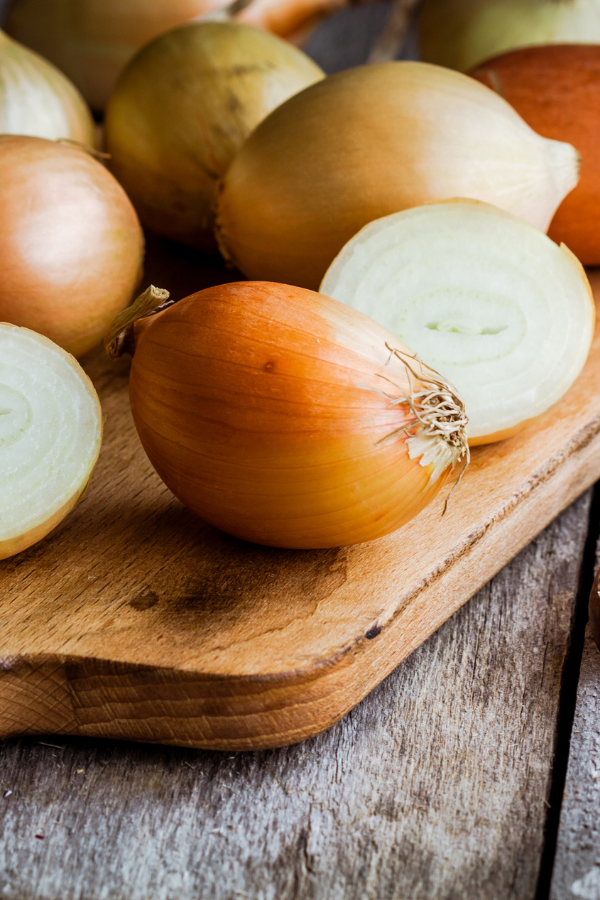Onions are a versatile vegetable that can fit in to so many different meals. They add flavor like no other vegetable and can make a dish better all on it’s own. These tips for planting and growing onions are perfect for your garden and greenhouse.

Botanical Information: Allium cepa
Quick Facts:
The onion, also known as the bulb onion or common onion, is a vegetable that is the most widely cultivated species of the genus Allium.
Varieties:
The most popular are:
chives
red onion
vidalia onion
white onion
red onion

Starting:
Plant onion seeds indoors 8–10 weeks before transplanting them outside just before the average last frost date in your area. Seeds should be sown ¼ inch deep. Onions require an open and sunny site, fertile soil, and good drainage.
Spacing:
Plant seeds in rows 12 to 15 inches apart. Cover the seeds with 1/2 to 3/4 inch of soil. When the seedlings are 2 to 4 inches tall, thin the planting. For large, dry onions, plants should be spaced 2 to 3 inches apart after thinning.
Companions and Enemies:
There are many plants that can help onions grow. The most popular are:
tomatoes
lettuces
herbs
On the other hand, there are some plants that can make growing worse for onions. Those are:
Carrots
beets

Watering :
You will want to water occasionally but thoroughly, applying about one inch of water each time.
Light:
In order to grow large onion bulbs, they need to get enough hours of daylight. Onions need full sun and at least 13 to 16 hours of light daily during bulb formation.
Pollination:
Alliums have perfect flowers but, can not self-pollinate because the male anthers shed pollen before the female stigma is receptive. Therefore they cross-pollinate via insects (flies and bees) or by manually pollinating (hand-pollinating) the flowers in a controlled environment.

Common Problems
Some of the top problems you may encounter growing onions include stunted growth, discolored leaves, wilting or droopy plants, and malformed bulbs due to poor soil, pests, onion diseases, or adverse weather conditions.
Harvesting
Harvesting onions is easy, and is the same for all globe onions. By midsummer, when the bulbs start to fatten up, you can begin harvesting. Pull the onion from the soil and store until ready to use.
Storing & Preparing
Peeled onions can be stored in the fridge for 10–14 days, while sliced or cut onions can be refrigerated for 7–10 days. To keep them even longer, freeze them in a resealable bag or airtight container. Cooked onions can be stored for three to five days in your fridge or up to three months in your freezer.
Planting and Growing Spinach can be easy with these tips.


Leave a Reply